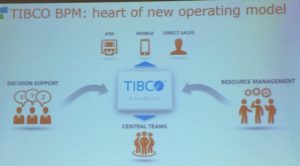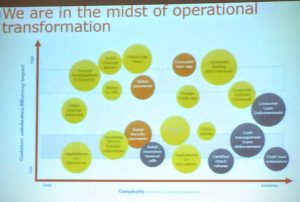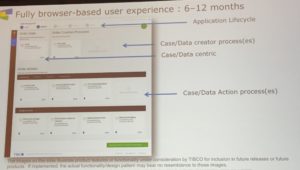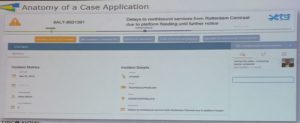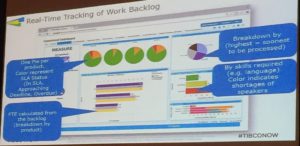Michael O’Connell hosted the last general session for TIBCO NOW 2016, focusing on analytics customer stories with the help of five customers: State Street, Shell, Vestas, Monsanto and Western Digital. I’m not going to try to attribute specific comments to the customer representatives, just capture a few thoughts as they go by.
- Spotfire is allowing self-service analytics to be pushed down to the business users
- Typically, the analysis going on in a number of different solutions — from Excel to BI tools — are able to be consolidated onto a single analytics platform
- Analytics is allowing the business to discover the true nature of their business, especially with outliers
- Real-time analytics on physical processes (e.g., supply chain) generates significant benefits
- Providing visual analytics to business changes the way that they use data and collaborate across the organization
- The enterprise-class back-end and the good visualizations in Spotfire are helping it to win over both IT and business areas
- Data and events are being generated faster and in greater volumes from more devices, making desktop analytics solutions impractical
- Business users who are not data specialists can understand — and leverage — fairly complex analytical models when it concerns their own data
- Analytics about manufacturing quality can be used to identify potential problems before they occur
We finished up with a brief presentation from Fred Ehlers, VP of IT at Norfolk Southern, about their use of TIBCO products to help manage their extensive railway operations. He talked about optimizing their intermodal terminals, where goods shipped in containers are moved between trains, trucks and ships; asset utilization, to ensure that empty cars are distributed to the right place at the right time for expected demand; and their customer service portal that shows an integrated view of a shipment lifecycle to give customers a more accurate, real-time view. As an old company, they have a lot of legacy systems, and used TIBCO to integrate them, centralizing operational events, data and business rules. For them, events can come from their physical assets (locomotives and railway sensors), legacy reporting systems, partner networks for assets not under their ownership, and external information including weather. On this, they build asset state models, and create applications that automatically correlate information and optimize operations. They now have one source of data and rules, and a reusable set of data and services to make application development faster. Their next steps are predictive maintenance, gathering information from locomotives, signal systms, switches and trackside defect detector to identify problems prior to an equipment failure; and real-time visual analytics with alerts on potential problem areas. They also want to inmprove operational forecasting to support better allocation of resources, allowing them to divert traffic and take other measures to avoid service disruptions. Great case study that incorporates the two conference themes of interconnecting everything and augmenting intelligence.
We’re at the end of day 2, and the end of my blogging at TIBCO NOW; there are breakouts sessions tomorrow but I’ll be on my way home. Some great new stuff in BPM and analytics, although far too many sessions going on at once to capture more than a fraction of what I wanted to see.


